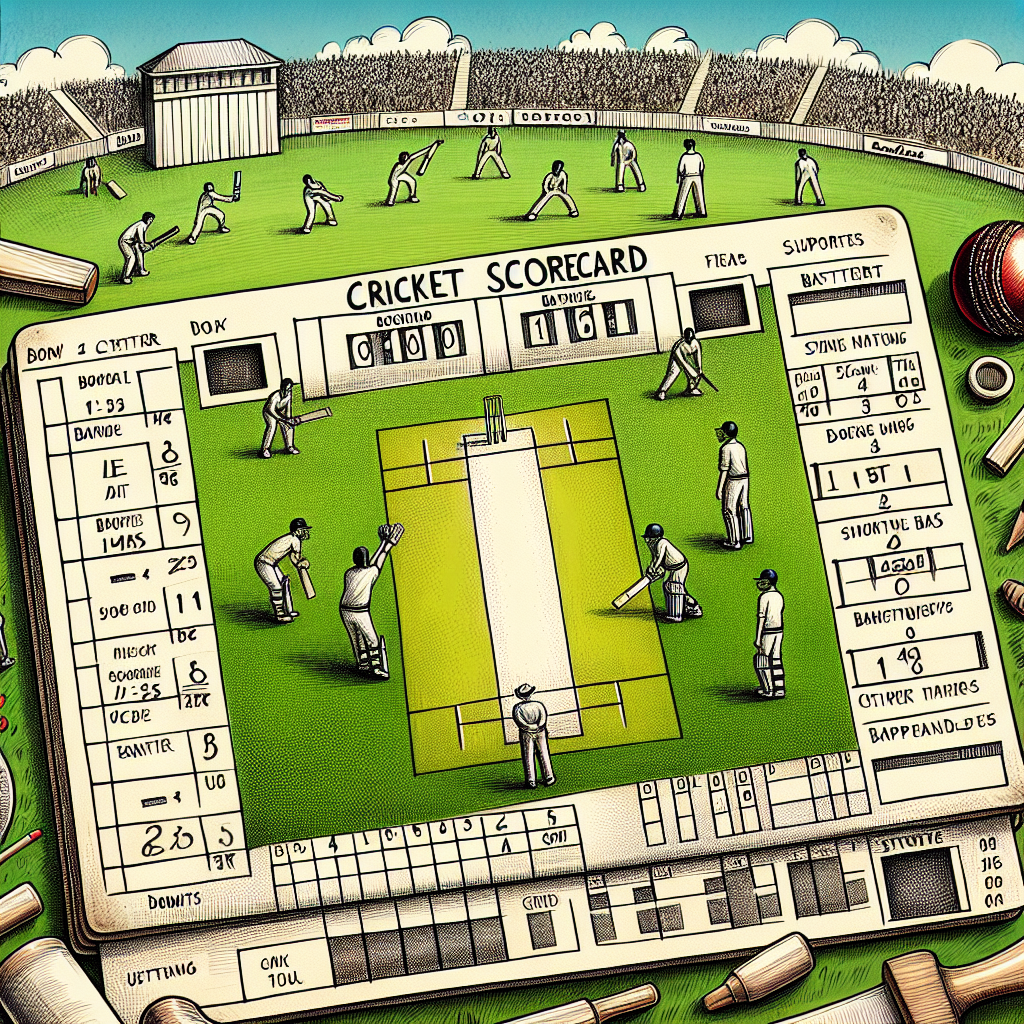
Cricket, often referred to as a gentleman's game, is a sport that has captivated millions around the world. One of the most intriguing aspects of cricket is its scoring system, which can be complex for newcomers. This article aims to demystify cricket scores, providing a detailed exploration of how they work, their significance, and the strategies behind them. We will delve into the history, the mechanics of scoring, and the impact of scores on the game, supported by examples and statistics.
The Evolution of Cricket Scoring
Cricket has a rich history dating back to the 16th century. Over the years, the scoring system has evolved significantly. Initially, scores were recorded on paper, but with technological advancements, digital scoring has become the norm. Understanding this evolution is crucial to appreciating the modern game.
Early Days of Cricket Scoring
In the early days, cricket scores were recorded manually by scorers who used tally sticks or notches on paper. This method was prone to errors and required a keen eye for detail. The introduction of scorecards in the 18th century marked a significant improvement, allowing for more accurate record-keeping.
Technological Advancements
With the advent of technology, cricket scoring has become more sophisticated. Electronic scoreboards and digital scoring systems have revolutionized the way scores are recorded and displayed. These advancements have not only improved accuracy but also enhanced the viewing experience for fans worldwide.
The Mechanics of Cricket Scoring
To fully grasp cricket scores, one must understand the basic mechanics of how runs are scored and wickets are taken. This section will break down the fundamental components of cricket scoring.
Runs
Runs are the primary unit of scoring in cricket. They are scored when batsmen successfully run between the wickets after hitting the ball. Additionally, runs can be scored through boundaries:
- Four: When the ball crosses the boundary after touching the ground.
- Six: When the ball crosses the boundary without touching the ground.
Extras, such as wides and no-balls, also contribute to the team's total score.
Wickets
Wickets are a crucial aspect of cricket scoring. A team’s innings ends when ten wickets are taken. The number of wickets lost is recorded alongside the runs scored, providing a snapshot of the team's performance.
The Significance of Cricket Scores
Cricket scores are not just numbers; they are a reflection of a team's strategy, performance, and potential. Understanding their significance can provide deeper insights into the game.
Strategic Implications
Scores influence the strategies employed by teams. A high score can put pressure on the opposing team, forcing them to take risks. Conversely, a low score may require a more defensive approach. Teams often adjust their strategies based on the score at different stages of the game.
Psychological Impact
Scores can have a psychological impact on players. A strong start can boost a team's confidence, while a poor score can lead to pressure and mistakes. Understanding this psychological aspect is crucial for both players and fans.
Case Studies: Memorable Cricket Scores
Throughout cricket history, there have been numerous memorable scores that have left a lasting impact on the game. This section highlights a few iconic examples.
Australia vs. South Africa, 2006
In one of the most thrilling matches in cricket history, South Africa chased down a record target of 434 runs set by Australia. This match is often cited as an example of the unpredictability and excitement of cricket.
India vs. West Indies, 1983 World Cup
India's victory in the 1983 World Cup final against the West Indies was a turning point in cricket history. Defending a modest score of 183, India showcased exceptional bowling and fielding to secure a historic win.
Statistics: The Language of Cricket Scores
Statistics play a vital role in understanding cricket scores. They provide context and allow for comparisons across different matches and eras. Here are some key statistics related to cricket scores:
- Highest Team Score: The highest team score in a One Day International (ODI) is 481/6 by England against Australia in 2018.
- Lowest Team Score: The lowest team score in Test cricket is 26 by New Zealand against England in 1955.
- Individual Records: Sachin Tendulkar holds the record for the most runs in international cricket, with over 34,000 runs.
Conclusion: The Art and Science of Cricket Scores
Cricket scores are more than just numbers on a scoreboard; they are a reflection of the game's complexity and beauty. From the evolution of scoring methods to the strategic and psychological implications, understanding cricket scores provides valuable insights into the sport. Memorable matches and statistical records further enrich the narrative of cricket, making it a game that continues to captivate audiences worldwide.
As technology continues to advance, the way we record and interpret cricket scores will undoubtedly evolve. However, the fundamental principles and excitement of the game will remain unchanged, ensuring that cricket remains a beloved sport for generations to come.





